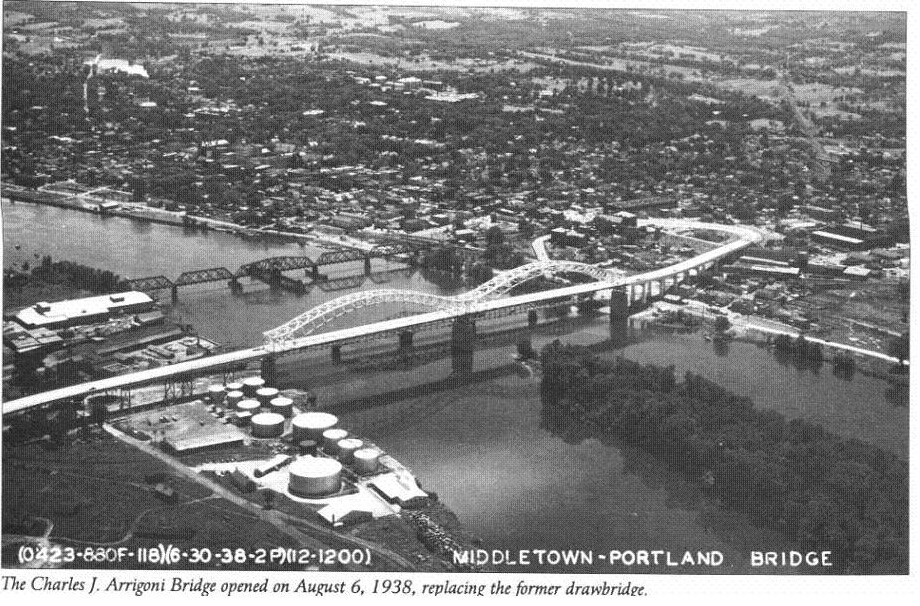
THE ARRIGONI BRIDGE

IMAGE FROM: MANAGING TRAVEL IN CONNECTICUT: 100 YEARS OF PROGRESS (CT DEPT TRANSPORTATION, 1995)
During the Great Depression President Franklin D. Roosevelt’s New Deal engaged the nation with myriad programs and initiatives. Many took the form of public works improvements that would employ large numbers of the downtrodden and provide for the greater good. Bridge-building was an example of the kind of project the Works Progress Administration (WPA) undertook. From California to Cape Cod its accomplishments still stand today; as does the Charles J. Arrigoni Middletown-Portland Bridge, which was opened on August 6, 1938.[1] It represents not only the tradition of federal assistance to the automobile revolution, but also the kind of thinking that was ongoing in the early stages of the twentieth century. To confront the challenges posed by gridlock like that pictured above in Washington, D. C., American infrastructure planners looked to more and better roads to accommodate increased traffic. They built the Arrigoni to create a modern highway connection between Middletown and Portland, and the cities and towns to the east and west of the Connecticut River. After World War II had consumed the nation’s resources for a period, they were again available to continue the revolution that had begun decades before. In 1946 plans were laid out to begin connecting Hartford with the Atlantic shoreline via limited-access highway. They were in effect, the next logical step in the modernizing of Middletown’s transportation system. They were following in the footsteps of the Arrigoni Bridge, and this time, they set out to connect the north with the south.
HOME INTRODUCTION THE AUTOMOBILE REVOLUTION ACHESON DRIVE CONCLUSIONS